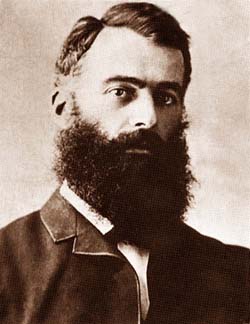1.
And from a poise at this station the plane may swoop down, at great disadvantage if close to the back of the wave, at various slopes and directions till it cuts into the air that is being raised by the face of the following wave, which again enables it to resume its velocity.
Lawrence Hargrave
2.
Workers must root out the idea that by keeping the results of their labors to themselves a fortune will be assured to them. Patent fees are so much wasted money. The flying machine of the future will not be born fully fledged and capable of a flight for 1,000 miles or so. Like everything else it must be evolved gradually. The first difficulty is to get a thing that will fly at all. When this is made, a full description should be published as an aid to others. Excellence of design and workmanship will always defy competition.
Lawrence Hargrave
3.
Used as kites, these rigid stable aeroplanes are superior to the very best cellular kites I can make; they are lighter, pull harder per square foot, attain a greater angle of elevation, and have fewer parts.
Lawrence Hargrave
4.
Bent metal is worse than bent wood and weight for weight is more flexible.
Lawrence Hargrave
5.
The most ordinary conditions for observing sailing birds are then the wind and sea are both aft.
Lawrence Hargrave
6.
It becomes a giant's task to compute the result when the effect of cross seas, wind at all angles and ever varying force, arched surfaces, head resistance, ratio of weight to area, and the intelligence of the guiding power crop up.
Lawrence Hargrave
7.
The people of Sydney who can speak of my work [on flying-machine models] without a smile are very scarce; it is doubtless the same with American workers. I know that success is dead sure to come, and therefore do not waste time and words in trying to convince unbelievers.
Lawrence Hargrave
8.
The people of Sydney who can speak of my work without a smile are very scarce.
Lawrence Hargrave
9.
My objective is and has been for years to make the lightest and most compact flying machine that would carry me at 25 or 30 miles per hour for 10 minutes or a quarter of an hour. Current events show this is not at all an ambitious project. Want of an elementary knowledge of oil machines baulks me and causes much misdirected effort. I doubt my ability to acquire that knowledge, and feel like a fireman trying to hew out a donkey pump.
Lawrence Hargrave

